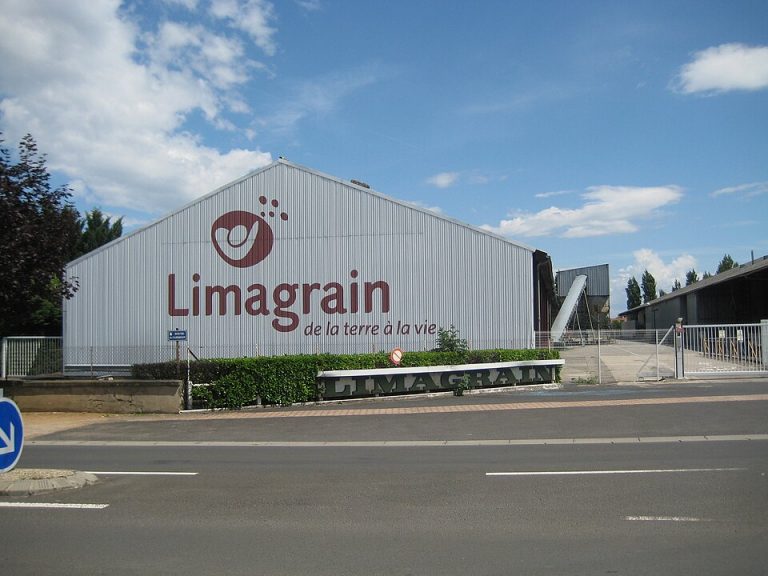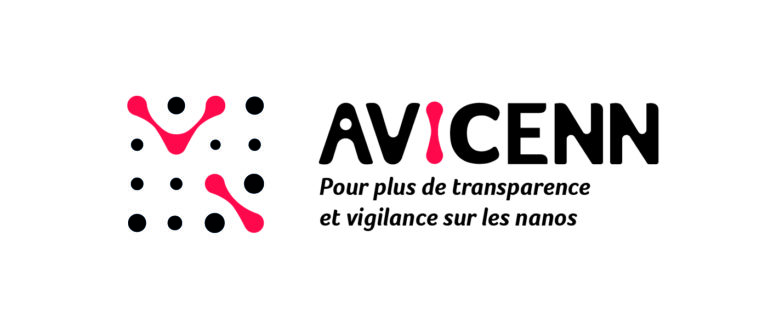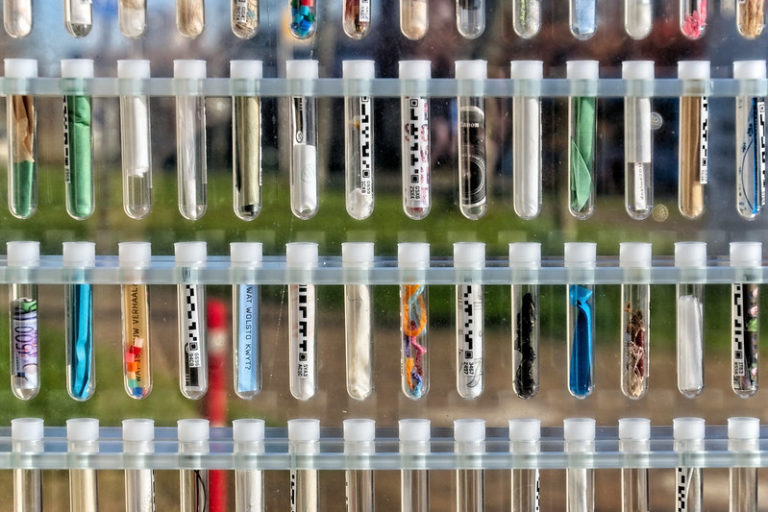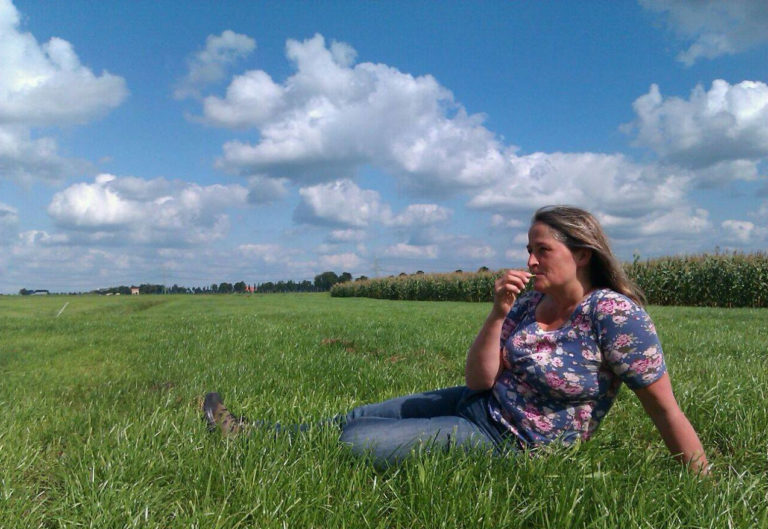News
Limagrain, a “cooperative” that has always bet on GMOs
Behind its label as an agricultural cooperative from Auvergne (France), Limagrain is now a global player in GMOs. The Group has been promoting GMOs for many years. Last March, its CEO, Sébastien Chauffaut, was optimistic about the forthcoming deregulation of GMOs/NGTs, which he hopes to market from 2029i. Here’s a look at Limagrain’s GMO strategy, combining state privilege and lobbying.

Founded in 1965, the Limagrain agricultural cooperative has become a major player in the seeds industry: the world’s fourth largest seed producerii and number one in vegetable seeds, thanks in particular to the acquisition of Vilmorin (1975) and Clause (1996). While cultivating an image of proximity and tradition, the cooperative has long been a pro-GMO advocate. This is hardly surprising, since in the 90s, Limagrain applied for patents relating to transgenesisiii. Limagrain’s commitment to biotechnology goes back even further, with the creation of Biocemiv in 1986, then its participation in the creation of Biogemma in 1997, a plant biotechnology research company.
A unique cooperative built with the State
Its creation by farmers from the Puy-de-Dôme region has helped Limagrain to build its image as a model of cooperative success. But the cooperative has undergone a metamorphosis over the years. With its seeds subsidiaries, its investment in biotechnological research and its international alliances, Limagrain now acts as a multinational company established in 53 countries on every continent. This transformation is reflected in its hybrid governance: on the one hand, a cooperative operation based on the participation of farmer-members, and on the other, a global industrial strategy that follows economic logic similar to that of large private companies.
This trajectory has also been made possible by decisive support from the French governmentv. From the 1950s onwards, the INRA (France’s National Research Institute for Agriculture, Food and Environment, now INRAE) – a public institution – worked closely with Limagrain to develop hybrid seed varieties adapted to the earliness of the northern hemisphere. This partnership led to the creation of LG11, the first maize hybrid to be included in the official catalogue in 1970.
Backed by this public support, Limagrain has structured its growth around a model that integrates research (more than 100 centres), production, transformation and marketing. While the acquisitions of Vilmorin and Clause have made a major contribution to Limagrain’s international development, it is its long history of acquisitionsvi that has enabled it to be present today on more than 90% of the world’s surface area cultivated with cornvii. At the same time, Limagrain has tightened its grip on agricultural practices through a system of hybrid seeds (still under developmentviii) which cannot be resown, and very strict specifications imposed on its members.
Limagrain has also strengthened its presence in the plant biotechnology sector by participating in the creation of Innolea in 2019, a new company dedicated to research into oilseed species, initially led by Biogemma. Innolea brings together three major players in plant breeding in France (Lidea Seeds, Limagrain and RAGT Semences) as well as the plant oil and protein innovation fund managed by Sofiprotéol. At the same time, through its subsidiary Vilmorin, in 2019 Limagrain acquired licensing rights for NGTs (Crispr-Cas 9 and Crispr Cpf1) as part of a strategic partnership with Corteva and the Broad Instituteix. These developments illustrate a significant evolution for Limagrain, whose historical activity as a traditional seed company is now expanding into biotechnological tools that are far removed from its original business. Although it was not originally a player in the chemical sector, Limagrain now has the ambition, when possible, to take over the sale of pesticides, particularly in connection with the development of NGTsx.
We can also see that, with a view to diversifying its activities beyond seeds, Limagrain has, over time, invested in the agri-food sector by buying up several emblematic brands in the sector, such as Brossard, Jacquet and Crêperie Le Breton.
A planned strategy of influence
From the beginning of 2010, Limagrain has been promoting GMOs obtained by “new” genetic modification techniques in the French and European decision-making arenas. Since then, following the example of the major seed multinationals, the company has been trying to convince as many players as possible that GMOs/NGTs should be distinguished from transgenic GMOs, with the aim of exempting them from Brussels regulations.
In France, Limagrain signed up in February 2018 to the register of “interest representatives” of the “Haute autorité pour la transparence de la vie publique” (HATVP) (the High Authority for transparency of public life)xi. The company from Auvergne contacted the HATVP on several occasions on the subject of “NBT” (New Breeding Techniques, former name of NGT) and then NGT. On 9 October 2020, Limagrain approached the HATVP to “share its concerns about the consequences of the [french] Conseil d’État’s decision of 7 February 2020“, which required that VRTH (herbicide-tolerant varieties) obtained by “in vitro mutagenesis” comply with GMO regulationsxii.
As part of its influence strategy, Limagrain contributes to public consultations, participates in expert panels, publishes opinion pieces and position papers, and more. In 2016, eight organizations, including the Confédération paysanne, France Nature Environnement and Greenpeace, suspended their participation in the “Haut Conseil des Biotechnologies” (HCB) – the High Council for Biotechnology – to denounce the seed industry’s growing control of the Council and its lack of impartialityxiii. At the same time, a number of organisations were highlighting another weapon used by the multinational seed companies: semantics. By claiming that new genetic modification techniques do not result in GMOs and that they merely mimic natural mutations, the seed industry decided to stop using the term GMO. The Commission adopted this strategy until it was overturned by the CJEU in July 2018, and again in 2023.
Limagrain is not content to simply act in France. The group is an influential member of Euroseeds, the seed industry’s main lobby in Brussels. In 2022, during the consultation launched by the European Commission on NGTs, the majority of positive contributions came from such organisations or from experts linked to the industryxiv. In addition, some members of the GMO scientific panel of the European Food Safety Authority (EFSA) have had past links with Limagrainxv. The German association Testbiotech, for its part, has revealed that some of these experts have filed patentsxvi on plants derived from NGTxvii, a situation that fuels suspicions of conflicts of interest.
Well-honed arguments
In an appeal published in December 2023xviii, Limagrain Chairman, Sébastien Vidal, called on France to support NGTs, deeming them “essential to support the transition towards a resilient economy and a sustainable food system“. The message was clear: “Far from the scarecrows that people are trying to conjure up, plants derived from NGTs are not “hidden GMOs” as some people claim: there is no introduction of foreign DNA“. These are erroneous statements, but they are taken for granted in the agricultural press and in public speeches. In March 2025, in an interview with the Association Française des Journalistes Agricoles (AFJA), Limagrain’s CEO, Sébastien Chauffaut, drove the point home by declaring: “seeds represent a major strategic lever: they are not limited to a productive role, but are part of a logic of power and influence“.
Limagrain uses arguments of efficiency, food sovereignty and competitiveness in the face of international competition. It’s a line of argument that is sure to find favour with certain members of parliament and ministries, anxious to show their support for “French research” and food sovereignty.
As AFJA points outxix, Limagrain has been using NGTs in research since 2017, and expects the first commercialisations in 2029 for wheat and maizei. It should be noted that Limagrain already markets wheat varieties tolerant to Clearfield herbicides, particularly in North America, where its subsidiaries in the United States and Canada offer wheat adapted to local conditions, in partnership with BASF.
A multinational like any other
Limagrain’s story raises a central question: is it possible to be a cooperative and lobby like a multinational? With its thousands of cooperative members, its international holdings and its political influence, the group embodies a hybrid form, that of a so-called cooperative controlling a multitude of industrial companies.
Limagrain has become just another player in the agro-industrial complex, more concerned with protecting its market share than the interests of farmers. A striking symbol of this change is that its subsidiary Vilmorin, long the national emblem of traditional seeds, now also holds major patents on genetic modifications. For example, patent EP3629711 covering a resistance/tolerance trait to the brown tomato rough fruit virus (ToBRFV). Given the importance of this genetic trait for many tomato growers, this patent (or others) could, as the NGO No Patent on Seedsxx suggests, be opposed in order to defend the rights of such users of genetic resources.
Presented by its supporters as a national champion with an international vocation, Limagrain is nonetheless required to be rigorously transparent about its often opaque lobbying practices. However, the multinational has recently chosen to free itself even further from such obligations by taking its subsidiary Vilmorin off the stock exchange, by buying back all its shares, which means that it can no longer publish details of its accounts.
i Mouhamed Ben Diene, “Les semences … de véritables armes diplomatiques”, JA Mag, 19 March 2025.
ii Limagrain, “Key figures for Limagrain’s 2023-2024 financial year and our businesses”, 5 December 2024.
iii INPI, Limagrain patent application FR2709496 of 30 August 1993, “Process for producing transgenic plants, fully transformed in T0 generation from meristems“.
iv Biocem’s aim was to apply advances in biotechnology to seed improvement, particularly for maize and wheat, by developing better-performing, disease-resistant varieties.
v Christophe Bonneuil and Frédéric Thomas, “Semences: une histoire politique. Amélioration des plantes, agriculture et alimentation en France depuis la Seconde Guerre mondiale”, pp. 89-90, ECLM, 2012.
vi Limagrain, “Bold and passionate for nearly 60 years“.
vii Fabien Benoît and Antoine Boureau, “Comment la coopérative Limagrain a bâti un empire des semences avec l’aide de l’État”, Reporterre, 11 May 2024.
viii In 2021, Limagrain published an article in the journal Nature describing the discovery of genes that could facilitate the creation of hybrid wheat:
Melonek, J., Duarte, J., Martin, J. et al, “The genetic basis of cytoplasmic male sterility and fertility restoration in wheat”, Nat Commun 12, 1036 (2021).
This work is the subject of PCT patent applications: WO2019086510 dated 31/10/2018 and WO2020161261 dated 6/02/2020 covering the use of orf279, Rf1 and Rf3 in the control of male fertility in wheat for the production of hybrids.
ix Chris Lusvardi, “Vilmorin & CIE Signs A New Agreement On Genome Editing Techniques With Corteva Agriscience and The Broad Institute,” Seed Today, December 12, 2019.
x “NGT, pesticides: Limagrain’s roadmap”, Agra Presse, 20 March 2025.
xi The High Authority for Transparency in Public Life (HATVP) is an independent administrative authority (AAI) with a public service remit: to promote probity and exemplarity among public officials.
xii HATPV, Limagrain (see “Action” tab)
xiii Christophe Noisette, “HCB : une neutralité très relative sur le dossier des nouvelles biotechnologies”, Inf’OGM, 10 March 2016.
xiv European Commission, Consultation “Legislation for plants produced by certain new genomic techniques”, April 2022.
xv Charlotte Krinke, “AESA: une agence assez peu indépendante et transparente”, Inf’OGM, 28 April 2023.
xvi According to a search carried out on the Lens.org database, Limagrain holds 278 patent families, the first dating back to 1978.
xvii Testbiotech, “NGT plant developers take over the EFSA GMO panel”, 5 September 2024.
xviii Pleinchamp, “NGT : le plaidoyer de Limagrain”, 12 December 2023.
xix Mouhamed Ben Diene, “Les semences … de véritables armes diplomatiques”, JA Mag, 19 March 2025.
xx No patents on seeds, “Tomato (Jordan Virus)”, 2024.














